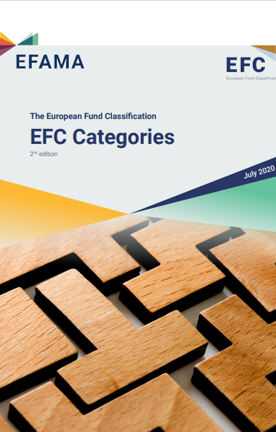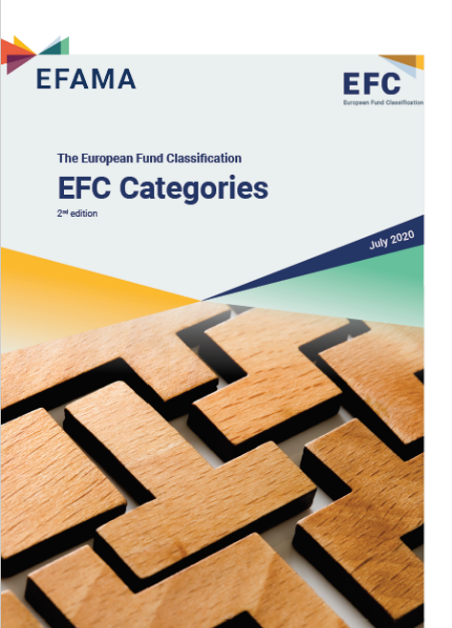Revised EFC categories better reflect the current European fund market
EFAMA published today the second edition of the brochure 'The European Fund Classification EFC Categories' to adapt the classification criteria to recent market evolutions. The European Fund Classification (EFC) is a pan-European classification system of investment funds, which is maintained by a Task Force of EFAMA.
Bernard Delbecque, EFAMA Senior Director, commented: "Providing a clear and transparent classification of funds is essential to promote cross-border distribution of funds and better protect investors. The EFC is ideally placed to contribute to this goal by providing a harmonised fund classification system to help European investors and their advisors compare funds from different jurisdictions and make sound investment decisions. EFAMA strongly encourages the adoption of the EFC by fund managers and distributors to contribute to a more integrated and competitive European fund market."
|
The EFC offers numerous advantages:
|
The main novelty in this edition of the EFC brochure is the introduction of 'investment themes' in the classification of equity funds, next to the three main classification criteria: sector, geographical exposure and market capitalization. Twelve specific investment themes have been identified as particular relevant in today's market: Natural Resources, Infrastructure, Climate, Agriculture, Water, Biotechnology, Medtech, Clean Energy, Digitalisation, Nutrition, Global Trends and High Dividend.
Currently, the EFC universe covers close to 5,400 European funds incorporating 36,000 share classes with a verified classification, while the indicative classification[1] covers more than 14,000 funds incorporating around 47,500 share classes.
All information about the European Fund Classification categories is available here or on LinkedIn @The European Fund Classification.
- ENDS -
For media enquiries, please contact:
Hume Brophy:
Kerri Anne Rice: kerrianne.rice@humebrophy.com
Paul Andrieu: paul.andrieu@humebrophy.com
info@efama.org
Notes to editors:
About EFAMA
EFAMA, the voice of the European investment management industry, represents 28 Member Associations, 59 Corporate Members and 23 Associate Members. At end Q1 2020, total net assets of European investment funds reached EUR 15.7 trillion. These assets were managed by more than 34,250 UCITS (Undertakings for Collective Investments in Transferable Securities) and 29,000 AIFs (Alternative Investment Funds).
More information available at www.efama.org or follow us on Twitter @EFAMANews or LinkedIn @EFAMA.
About FundConnect
FundConnect (www.fundconnect.com) is one of the most experienced Ecosystems for fund data in Europe with over 20 years of experience in providing Fintech solutions for the fund industry, banks, insurers and other financial institutions. FundConnect is an industry-driven infrastructure, with the fund industry as key shareholders.
FundConnect is a pioneer in connection to a number of regulations, including UCITS, IORP II, Solvency II, MiFID II, PRIIPs, and via the separate business units PRIIPsHub and TPTConnect, is assisting clients all over Europe with regulatory data solutions.
[1] The indicative classification serves as a preliminary step towards a verified classification and a way to allow for a broader coverage of the European fund market. It is performed on the basis of publicly available information without waiting for the fund companies' agreement to provide the portfolio holdings of their funds.






























